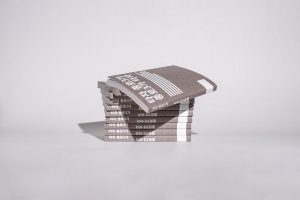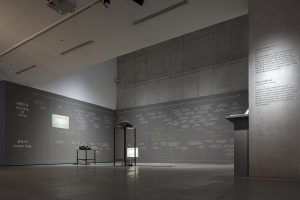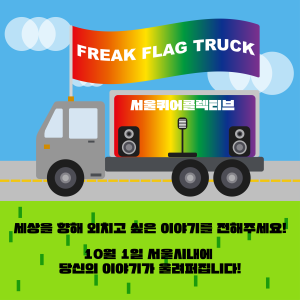The Art Performance of Seoul Queer Collective features an exhibition, Freak Flag Fly, displayed in October 2022 by Department of Communication PhD Student Nam Soojung, who edited and translated work by SQC Kim Jungmin.
FREAK
In this exhibition, the Seoul Queer Collective has chosen to use the term “FREAK” instead of “QUEER” to challenge the way that people have come to see themselves and others in the city as “urban queer.” These individuals are often labeled as monsters or abnormal beings and are frequently feared or ridiculed. However, the Seoul Queer Collective believes that it is not the monsters who need to change, but rather the people who have made them into monsters. This message is reflected in the lyrics of the song “Freak Flag” from the musical “Shrek the musical,” which states, “They made us feel that way. But it’s they who need to change.” The Seoul Queer Collective wants to challenge this notion and encourage people to embrace their individuality by rejecting the idea that there is anything wrong with being different.
FLAG
In a previous exhibition at the National Museum of Modern and Contemporary Art in Korea, the Seoul Queer Collective focused on a specific area in the city, Jongno 3-ga. However, in our current exhibition, we are considering the Queer Parade as a moving and temporary space occupied by members of the queer community. During the parade, people break away from the normality of the city, outing themselves as different and temporarily occupying and transforming normal spaces into abnormal ones. The flags flown high in the sky during the parade serve as a way for individuals to reclaim their land and space, which may not have felt like “theirs” in their daily lives. These flags, planted firmly on the ground, allow the voices of the people to be heard as a collective force. During the Queer Parade, the people standing under the flags appear united. Many people participating in the parade create their own flags representing their identities and purposes, forming a loose solidarity. These flags serve as a way to protest and express their views. “Various people” from different backgrounds and perspectives infiltrate the city and come together, operating as a unified force and forming solidarity with one another. It is possible for these flags to be in solidarity with one another even if they represent different causes or beliefs. For example, a person may support veganism but still participate in the Queer Parade, or they may participate in the parade while also opposing the climate crisis. The key is to recognize and respect the different identities and purposes represented by the flags, even if they do not align with one’s own beliefs. Solidarity on the internet is the act of coming together and standing in support of a particular cause or group. While solidarity has become more widespread under the banner of feminism, it has also been compromised in some cases. It is not uncommon to see instances of cyberbullying with statements claiming to be in solidarity with a particular individual or group, but ultimately attacking or harassing them. This is not true solidarity, but rather bullying under the guise of support. It is important to consider what we are truly allied with and ensure that our actions reflect that.
FLY
“FREAK FLAG FLY” is an idiom that encourages people to reveal their true selves without any restrictions and embrace their unique qualities. By bringing this phrase as the title of the exhibition, the Seoul Queer Collective is urging the audience to reveal their true selves, just like a monster revealing its face. The exhibition features numerous flags, all produced in the same size, that are meant to reproduce the experience of queer parades, festivals, and marches. The flags serve as a way to reveal the identities of various monsters to the public. Through the mixed state of the flags fluttering together, it is possible to imagine the creation of solidarity among different groups. For example, transgender and gay people may not necessarily be similar, but they may share a sense of solidarity with migrants. In this way, solidarity can be created among people with various identities beyond just sexual minorities. The Seoul Queer Collective encourages everyone to embrace their own unique and strange flag.
Introduction of SQC and previous work
SQC Kwon Wook & Kim Jungmin
The Seoul Queer Collective (SQC; Jung Seung-Woo, Kim Jungmin, Kwon Wook, Nam Soojung) previously focused on the process of gentrification in the Jongno 3-ga area of Seoul, where minority groups such as sexual minorities, poor elderly people, and prostitutes are transformed into “others” by the norms of urban society. SQC was formed as a response to the stigmatization and displacement of these “urban queers.” As a result, SQC aims to create an alternative urban history by documenting the micro-history of these urban queers who are being rejected and erased from the dominant narrative of the city. Through this process, SQC seeks to visualize the hierarchy of the city and challenge the dominant narrative of the “right to the city” as a major urban discourse.
SQC has been working to redefine the term “queer” as “urban queer” through three exhibitions. “Urban queer” is considered a political topic from a specific location, and SQC documents it in various ways. Previous works by SQC have attempted to redefine “urban queer” by focusing on the “others” who are stigmatized based on specific regions or circumstances. However, the next step in this project is to examine the phenomenon of “becoming others” that subverts existing boundaries and hierarchies and to redefine “urban queer” through this lens.
SQC began by bringing a discourse on “urban queer” to the public forum in response to gentrification in a specific area (Jongno 3-ga, Seoul). Since SQC’s work has focused on a specific place, reproducing that place has been an essential element. However, rather than simply reproducing a specific space, SQC aims to use the metaphor of space in their work, drawing on traditional visual art techniques.
In the second half of 2019, SQC held an open studio at the MMCA Changdong Residency, Seoul, where we reproduced the banners of Jongno 3-ga to showcase the layered history of “urban queer” in the area. By bringing temporality to the object of the banners, SQC was able to reveal the spatial implications in the exhibition hall. However, it is impossible to fully summarize the local context, leading to a pessimistic view of whether a city can be reproduced. Despite this, the act of recording performed by SQC itself becomes a form of resistance against the normal city and allows the “urban queer” within it to assert their existence.
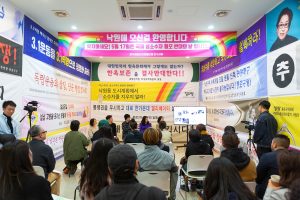
SQC creates work that is based on space, and this necessarily involves defining that space, whether consciously or not. In an effort to expand the movement of queer beyond physical spaces, SQC has also created a web-space-map that records the individual’s queering journey. This map creates a new “queer layer” in both the city and the internet. The webpage “What trajectory are you drawing?” (seoulqueercollective.org) allows people (including both LGBTQ and heterosexual individuals) to identify their geographic location by connecting the coordinates of where they were born, where they currently live, and where various social relationships take place. The resulting topographical map shows a fragmentary trajectory of life, with layers of age and sexuality overlapping and blurring the boundaries between points. Through this, SQC aims to bring the topic of “visualization of existence” to a more concrete realm of life, and to provide data that serves as a foundation for their focus on Seoul.
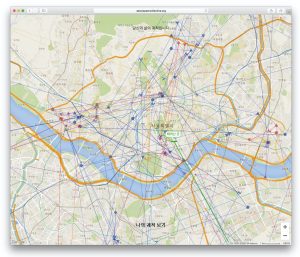
In the process of creating the project Flat-Overlapped (2020), SQC sought to visualize the existence of “urban queer” and move the topographical map of daily life to Jongno 3-ga. Through the process of building up the stories of various individuals, SQC realized that Jongno 3-ga is not just a physical space, but a constantly changing concept and situation. Based on this understanding, Flat-Overlapped (2020) reflects the many voices saying, another project My Jongno 3-ga is OO (2020) that were collected through the participatory website (myownplace.co.kr), creating a more open concept of Jongno 3-ga. In the exhibition space, the voices collected through the website will be able to resonate together, allowing the audience to encounter the perspectives of others. The space where these voices mumble and resound is the voice of those who have escaped from the city, and it allows us to experience that it is the voice around us.
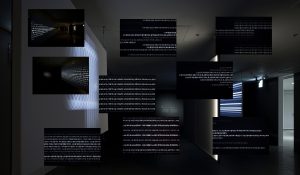

The chronology of others (2020) is an important source for checking and filling in records, but the history of these groups has often not been recorded. In response, SQC has created an alternative timeline in an attempt to understand where the stories of “others” can be placed in the grand narrative of the dominant group. In the chronological table that fills the walls of the exhibition, the audience is invited to participate in the history of “others” by writing their own history on the table. This allows for a retelling of history that includes the perspectives and experiences of these marginalized groups.

Seminars are an important aspect of the working process for the Seoul Queer Collective (SQC). Over the past two years, SQC has held four seminars in order to further solidify their understanding of their subject matter and expand the discussions into academic contexts. The first seminar, “Urban Recording and Social Engagement” (held at the MMCA Changdong Residency on November 22, 2019), focused on the social meaning of documenting the city. The second seminar, “Queer-Space, Recording!” (held at the Seoul City Youth Hub on December 1, 2019), examined the space of sexual minorities in Seoul and their daily lives, with gender queer parties providing insight into the existence and spatiality of queer space that had not previously been addressed. The third seminar, “Walking-TalkingListening” (held online on May 23, 2020), provided an opportunity for individuals who have lived in a specific space in Seoul to share their experiences and history. The fourth seminar, “Rebuild Seoul” (held online in September 2020), proposed a new perspective on the construction of an urban community that embraces the daily lives of urban queers. Through these seminars, SQC gained valuable insights that helped guide their work moving forward.
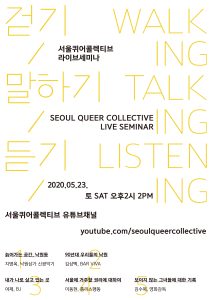
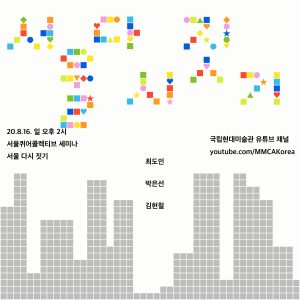
In June 2021, the National Consent Petition calling for the passage of the AntiDiscrimination Act by the National Assembly met the threshold for referral to a committee of the Assembly, having received the support of 100,000 people. Additionally, as of April 21, 2021, the “Blue House National Petition” platform had received 1.04 million petitions, with 270 responses that had garnered 200,000 supporters being posted by November 21. While the Blue House is an executive branch, many of the petitions relate to actions that can be taken by the legislative branch. In these situations, SQC sought to request the passage of the AntiDiscrimination Act from the Blue House, the administrative body. Spectators participating in SQC’s efforts were asked to stamp the anti-discrimination provisions that they felt were relevant within the provisions of the proposed Act and send them to the President. This action, Postcard to be sent later (2022), raised questions about whether the voices of minorities could overcome the hurdle of 200,000 supporters and also about the potential impact of direct communication with the President on the issue.
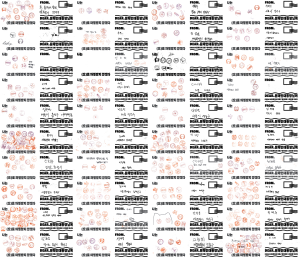
From October 20 to November 7, 2022, SQC presented the latest project, Freak Flag Fly, at Post Territory Ujeongguk in Seoul (http://ujeongguk.com/freak-flag-fly/). The first art installation of this project, titled FREAK, FLAG, FLY, features reproductions of the flags that appeared in previous Queer Parades displayed in the exhibition space. These flags, all the same size, reveal the names of various urban queers. The exhibition invites viewers to consider the potential for different forms of solidarity among urban queers, beyond just those within the LGBT community, and to consider the connections that may exist between groups such as transgender people and migrants.
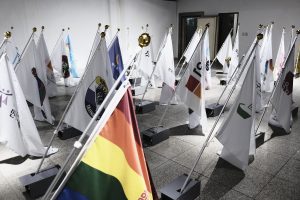
As part of the Freak Flag Fly project, SQC presented a performance called Freak Flag Truck, in which a truck filled with flags is driven through the city as a way of advertising urban queer solidarity. This performance is meant to mimic the way that trucks with advertisements roam the city, particularly during election season. The flags on the truck serve as introductions to the solidarity of each flag, and the performance aims to spread the voice of urban queer freely among pedestrians in the city without any consultation or social consensus. The performance is meant to infiltrate the city with this message, and to advertise urban queer in a bold and unconventional way.

During the exhibition two times seminars, “Occupation On/Off”, were held by SQC. The first seminar focused on the online queer parade held over the past two years and explored its scalability and the need for an offline version. We also discussed the methods for building solidarity between online and offline communities and the implications of these approaches. The second seminar covered the central metaphor of the project, the flag, including flag design methodology, the power of flags, and the significance of flags as a means of representing others.
Our work begins by examining the larger structure of society and addressing the hierarchical relationships that lead to discrimination among its members. “Queer” is used to describe individuals who deviate from the norms established by the dominant power structures of society, and in doing so, they are often stigmatized and labeled as “other.” However, the sexual minority group has reclaimed the term “queer” as a proud identity. Our work aims to shed light on the “structural discrimination” that exists within this identity. We believe it is important to recognize that the stigmatization mechanism of the dominant power always operates within the word “queer.” We are planning to publish our work by April 2023.
